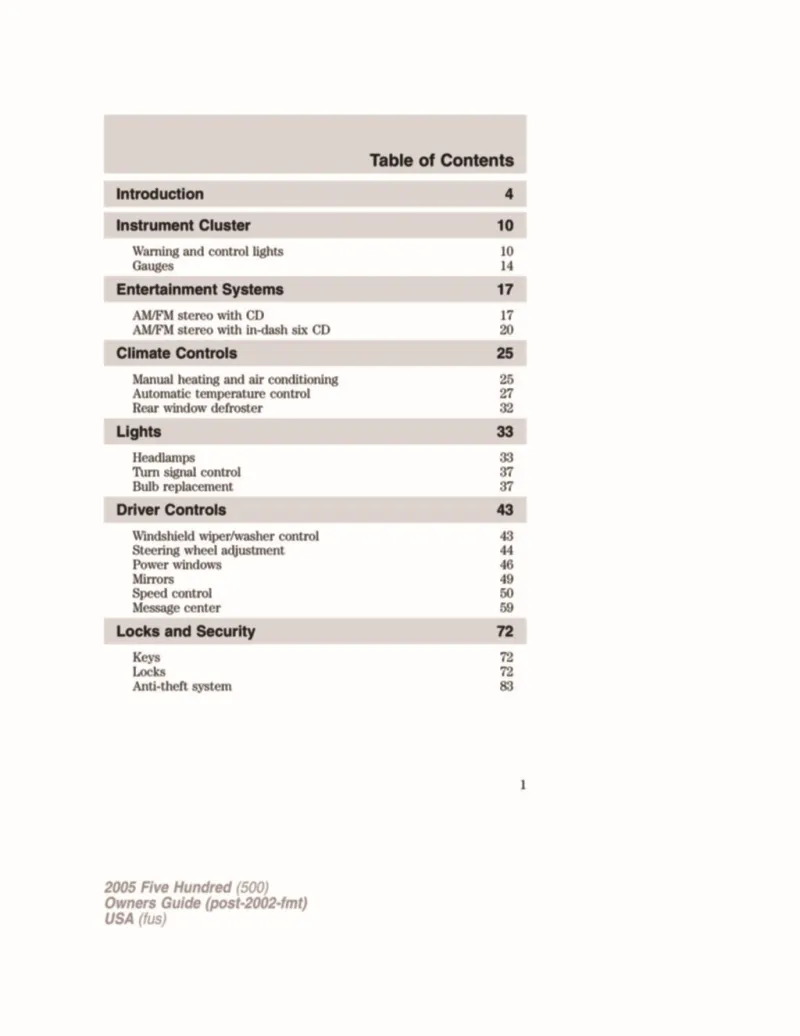2005 Ford Five Hundred Owner's Manual

Table of Contents
2005 Ford Five Hundred Overview
Introduction
The 2005 Ford Five Hundred stands out as a full-size sedan known for its spacious interior and comfortable ride. Bridging the gap between a family car and a luxurious ride, this model offers a blend of practicality and style, ideal for both daily commuting and long-distance travel. With its contemporary design and user-friendly features, the Five Hundred is an excellent choice for buyers looking for a reliable and spacious vehicle.
Powertrains
The Ford Five Hundred is powered by a choice of two robust engines, giving potential buyers options for performance. The base engine is a 3.0-liter V6 producing 203 horsepower, paired with a Continuously Variable Transmission (CVT) that optimizes fuel efficiency. For those seeking more power, an optional 3.5-liter V6 engine delivers 250 horsepower, providing a notable boost in performance while maintaining respectable fuel economy. Both configurations ensure smooth acceleration and responsive handling, making the driving experience enjoyable.
Trims
Features
The 2005 Ford Five Hundred is equipped with an array of features designed for comfort and safety. Standard features include power windows and locks, cruise control, and an AM/FM stereo. Optional features offer enhancements like a rear parking assist system, navigation, and a premium audio system with MP3 capability, ensuring that both drivers and passengers enjoy a pleasant journey.
Owner's Manual
The owner’s manual for the 2005 Ford Five Hundred is a vital resource, providing essential information on vehicle operation, maintenance schedules, safety features, and troubleshooting tips. It includes detailed explanations of each trim's features and options, serving as a handy guide to maximize the ownership experience. Properly following the owner's manual can help maintain the vehicle's performance and longevity for years to come.
User manual download
The Ford Five Hundred owner manual for the 2005 model year is to be found in PDF downloadable format on this page. The owner manual for the model year 2005 is free and in English, but the repair manuals are usually not easy to get and may cost more.
Manual Questions
Fill the form below and someone will help you!
